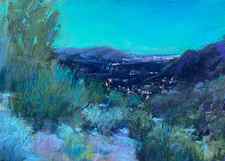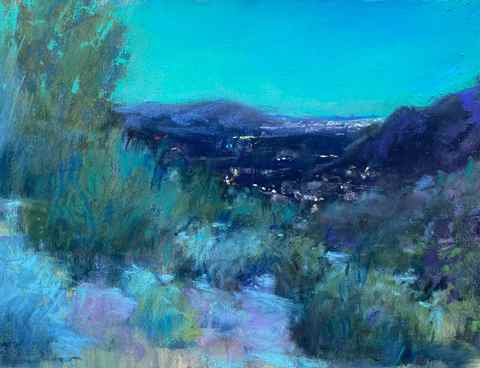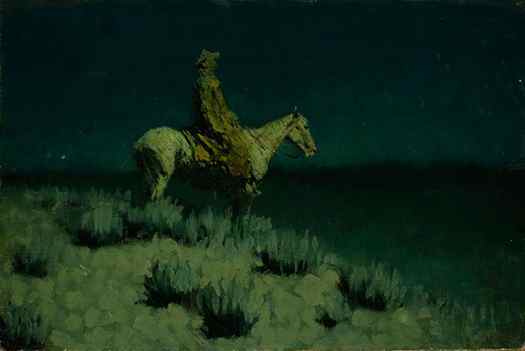ADDITIONAL RESOURCES
Paint Trees Like an Impressionist

To answer a student’s question about painting trees I decided to research the Impressionists and apply their approach to a painting demonstration.
Painting trees is my constant source of joy and torment. I am paraphrasing Claude Monet slightly as he was referring to color when he said that. But Monet may well have included trees in his list of joys and torments. Trees are so varied that painting them is much like painting portraits. Always different.
In this article I answered a question from one of my students. She was faced with a bunch of spindly pine trees along a lake or river. These trees reminded me of similar subjects in Impressionist paintings. Sure enough there are many examples of spindly or atmospheric looking trees among their works.
Lessons from the Impressionists
I singled out Claude Monet and spent time looking through various books with examples of his works.

In Monet’s painting of Boulevard de Capucines you can examples of these kind of trees. Monet does not attempt to paint leaves and twigs. The last thing he wants is a bunch of silhouetted lines looking tight and hard. Instead he suggests all of that fussy detail with a few loose strokes of the brush.
The bulk of the trees are soft edged, scrubbed shapes of blues, violets and warm grays. It is the atmosphere enveloping the trees that Monet observed and painted. Monet was not illustrating a gardening book. He was painting a moment in life.

In this painting of poplars Monet has used blue and violet once again to soften edges. These colors also mimic the optical illusion we see around the edges of trees or through sky holes in trees. Particularly when the trees are some distance away and the effects of atmosphere are most apparent.
Most artists will ignore this phenomenon, but Monet understood that to get a true impression of the scene he had to use color and brushwork to create his work. Notice how all of those cool shadow colors create a shimmering sense of wholeness to the trees.
The Painting Demonstration
With these lessons in mind I set about painting the scene. You can see the full demonstration in the video below. The main idea was to avoid a hard clump of shapes. Also to avoid painting leaves and twigs. Suggest details, do not paint them. Then to use blue and violet as shadow colors to create warm and cool harmonies of color.
It is not easy, especially on a small canvas, but try this approach and you will quickly learn how to use warm and cool colors together to achieve a lovely atmospheric painting.
Watch the demo below and let me have your comments or questions too.
Dusk
Before night, there is dusk — that fleeting time after the sun drops below the horizon, when everything is bathed in deep, rich blues. This moment is captured in the the two painting below, Rooftops 59th Street and Cascade Dusk.

Rooftops 59th Street, Cobalt Dusk , oil on paper, 7″ x 14″

Cascade Dusk, oil on canvas, 20″ x 38″
Colors in the Dark
To fully understand the color requirements of the nocturne, we have to recognize an important truth about color and light.
The darker a color is, the less color or “hue identity” can be perceived within that color. At least some light is needed to reveal a color’s intrinsic hue.
When you are in a very dark room at night, a red sofa or a green wall will hardly register as red or green. You cannot perceive the individual hue of those objects, only their values. This is because of the physiology of our eye. Our eye has two kinds of photoreceptors. The cones provide vision in brighter light, and are responsible for distinguishing color and fine detail. The rods handle vision in low light, but are not able to distinguish color. So when viewing subjects in low-light conditions, we are not able to discern much color.

In the left photo, above, taken at night, colors are barely discernible. This is because our eyes do not perceive color in very low-light conditions. Once light enters the scene (even partial light, as shown in the right photo), we are able to make out the individual hues in each painting.
To paint a nocturne, therefore, the painter must be willing to modify colors and values in three ways:
- Make the values lighter than they would actually be at night,
- Exaggerate the value contrasts slightly, to replace what is lost in the absence of a strong light source.
- Add more color than is actually seen in the dark — especially colors in the blue and blue-green families.
Frederick Remington – Blue and Green Makes Night
When I first tried painting nocturnes over a decade ago, I found inspiration in Frederick Remington’s nocturnes of the American West. I observed a common color thread in his paintings: he not only relied heavily on blues and rich black-like colors, as one might expect, but he also used a great deal of blue-greens and greens. These color families are particularly effective as suggesting the colors of night.
In both of the examples below, Remington shifts the lights toward green. Perhaps a moonlit night in the West actually produces such colors, but more likely, Remington is performing perceptual sleight of hand with his colors. He is exaggerating or modifying the colors in such a way that the they make a more effective statement about the color of night than the colors he actually saw.
There is also a scientific explanation as to why we respond well to greens in a nocturne. The Purkinje shift notes that although our eyes can hardly perceive color in the dark, they are more sensitive to green wavelengths. James Gurney, in his book Color and Light, goes into this more in the section called Is Moonlight Blue?

Frederick Remington, Apache Scouts, Listening

Frederick Remington, Untitled, (The Night Rider, The Night Herder ) 12″ x 18″





